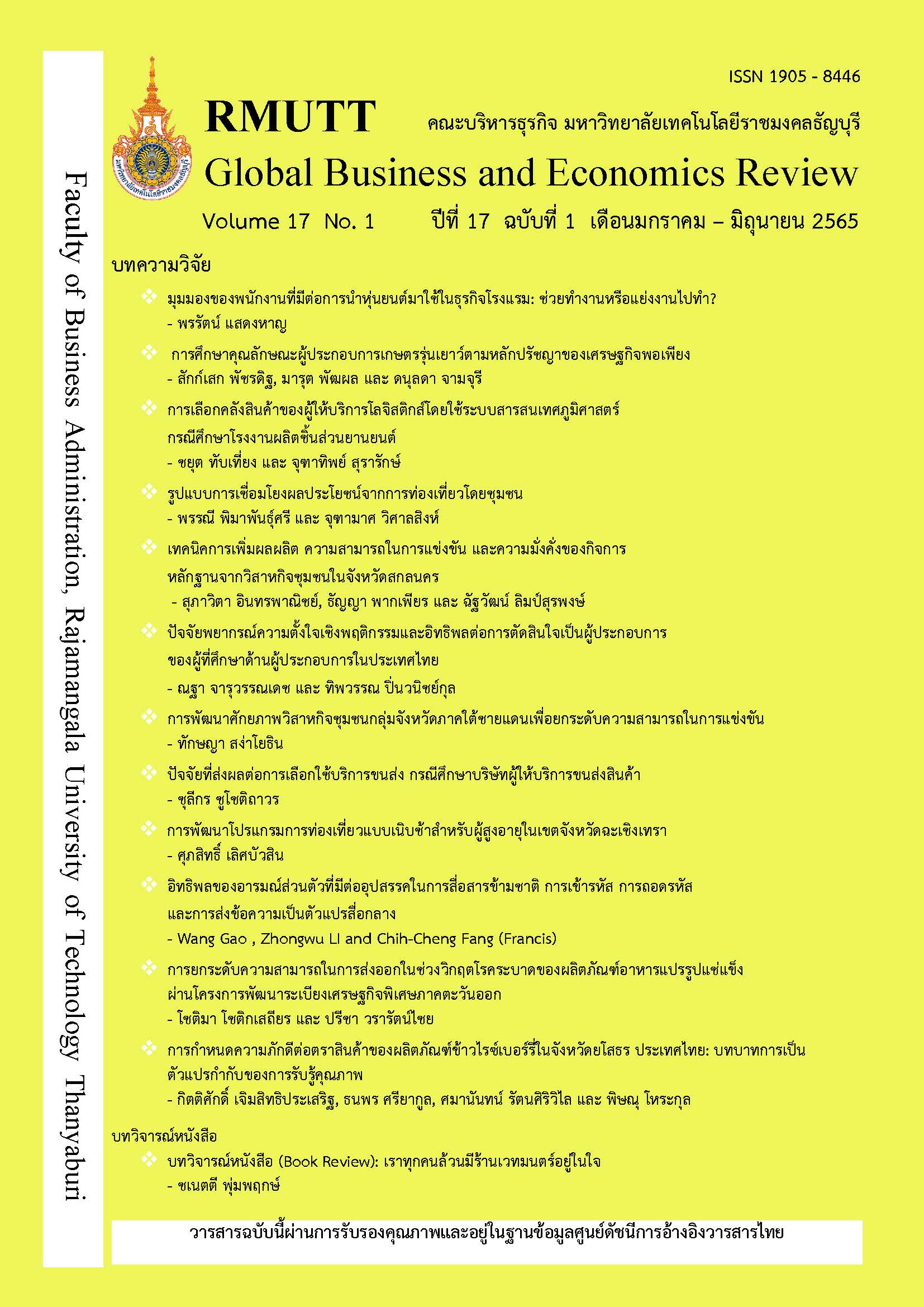COMMUNITY BENEFITTING THROUGH TOURISM (CBTT DASTA MODEL) AN INTEGRATED APPROACH
Keywords:
Community based Tourism, Community Management, Community Benefitting through Tourism –CBTT, Social Capital, Market-access-channelAbstract
Community based tourism (CBT) has been used as a participatory approach to achieve a better quality of life for local communities. This paper synthesized extensive information on impact evaluations and indicators that can be applicable to measure various aspects of social, economic and environmental sustainability at a community level. Incorporating the existing approaches with lessons learned from a pilot project in 6 designed areas in Thailand, an integrated monitoring system called “linkages & leakages” has been developed. The purpose of this research was to look into the structure and function of a tourism promotion club, tourism management as well as the administration of tourism-related income and benefits (CBTT Model). A comprehensive and local friendly tool was leveraged by a multi-stakeholder’ co-creation and facilitated by the Designated Areas for Sustainable Tourism Administration (DASTA). It has been designed as a locally owned and led process for monitoring, managing, and enhancing the sustainability of CBT initiatives. Three intertwined sustainable dimensions; ecologically, socio-culturally and economically sustainable and equitable environment enable community leaders to delineate the need for empowerment and capacity building programs, local sourcing strategies, starting up community enterprises and their social capital building structures (social networks and trust).
References
Achrol, R. S., & Kotler, P. (1999). Marketing in the network economy. Journal of Marketing, 63(Special Issue 1999), 146-163.
Bulatovic, J., & Rajovic, G. (2016). Applying sustainable tourism indicators to community-based ecotourism tourist village Eco-katun Stavna. European Journal of Economic Studies, 16(2), 309-330.
Dolezal, C. (2015). The tourism encounter in community-based tourism in northern thailand: empty meeting ground or space for change?. ASEAS – Austrian Journal of South-East Asian Studies, 8(2), 165-186.
Forrest, R., & Kearns, A. (2001). Social cohesion, social capital and the neighbourhood. SAGE Journal, 38(12), 2103-2110.
Nepal, S. K. (2010). Tourism and political change in Nepal. In: Butler, R., & Suntikul, W. (eds.), Tourism and political change (pp. 147-159). Oxford, UK: Goodfellow Publishers.
Ramos, H., Stoddart, M. C. J., & Chafe, D. (2016). Assessing the tangible and intangible benefits of tourism: perceptions of economic, social, and cultural impacts in labrador’s battle harbour historic district. Island Studies Journal, 11(1), 209-226.
White, S. (2011). Sustainable Tourism: A Review of Indicators. UK: Office of National Securities.
Downloads
Published
How to Cite
Issue
Section
License
Copyright (c) 2022 พรรณี พิมาพันธุ์ศรี, จุฑามาศ วิศาลสิงห์

This work is licensed under a Creative Commons Attribution-NonCommercial-NoDerivatives 4.0 International License.
The articles published in this journal are the intellectual property of their respective authors.
The views and opinions expressed in each article are solely those of the individual authors and do not reflect the positions of Rajamangala University of Technology Thanyaburi or any of its faculty members. All components and content of each article are the sole responsibility of the respective authors. In the event of any errors, the authors shall bear full responsibility for their own work.








